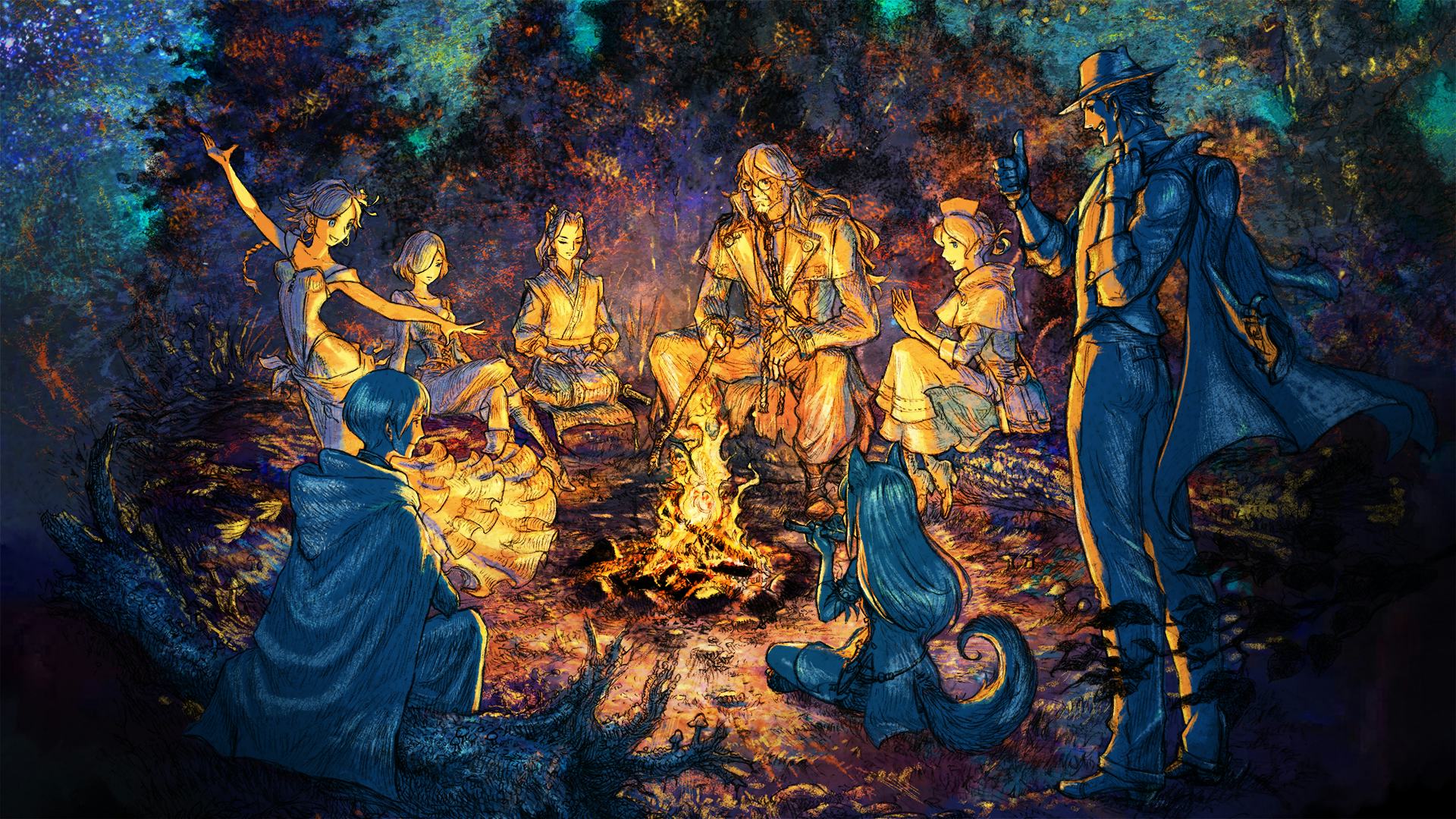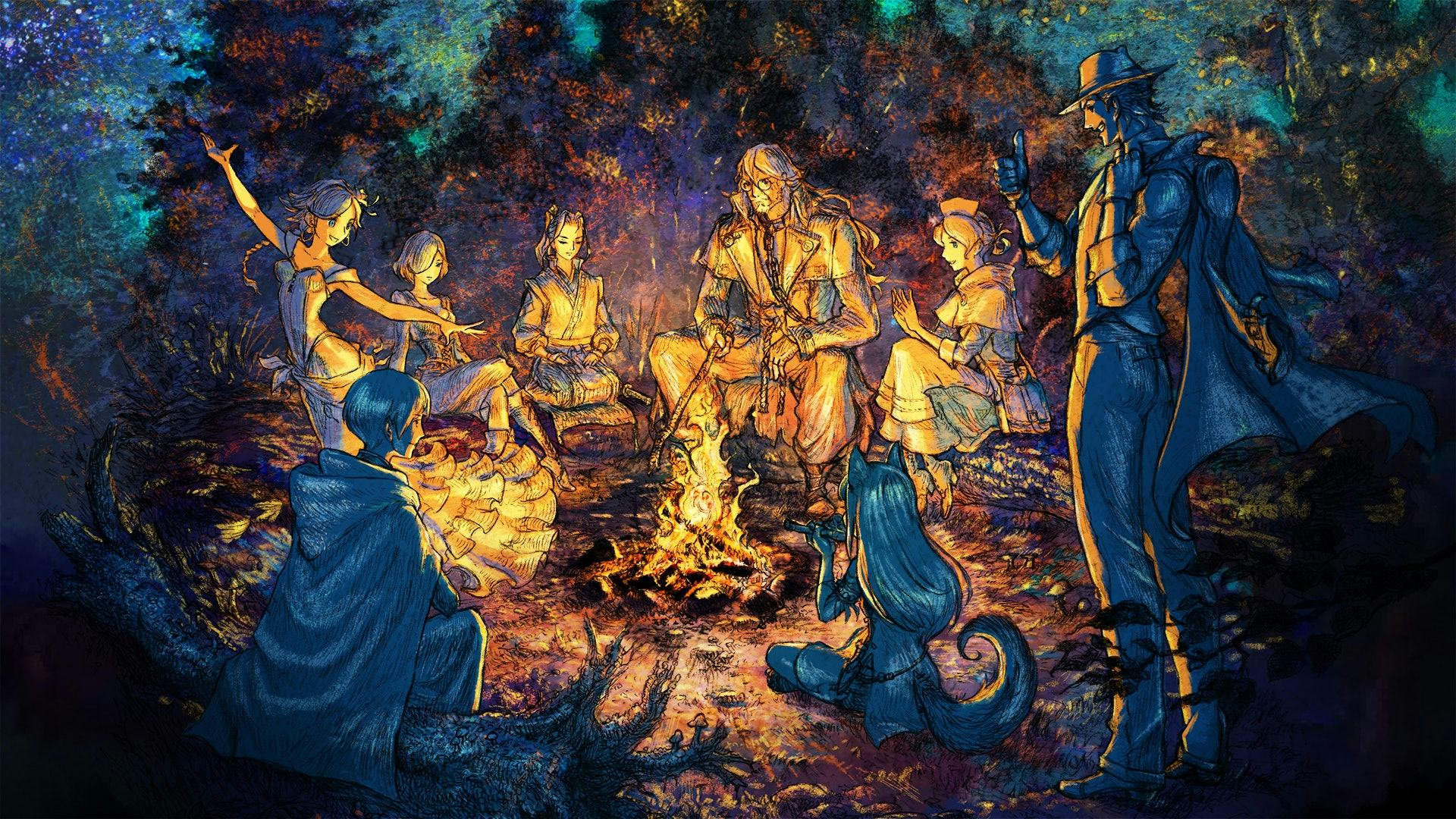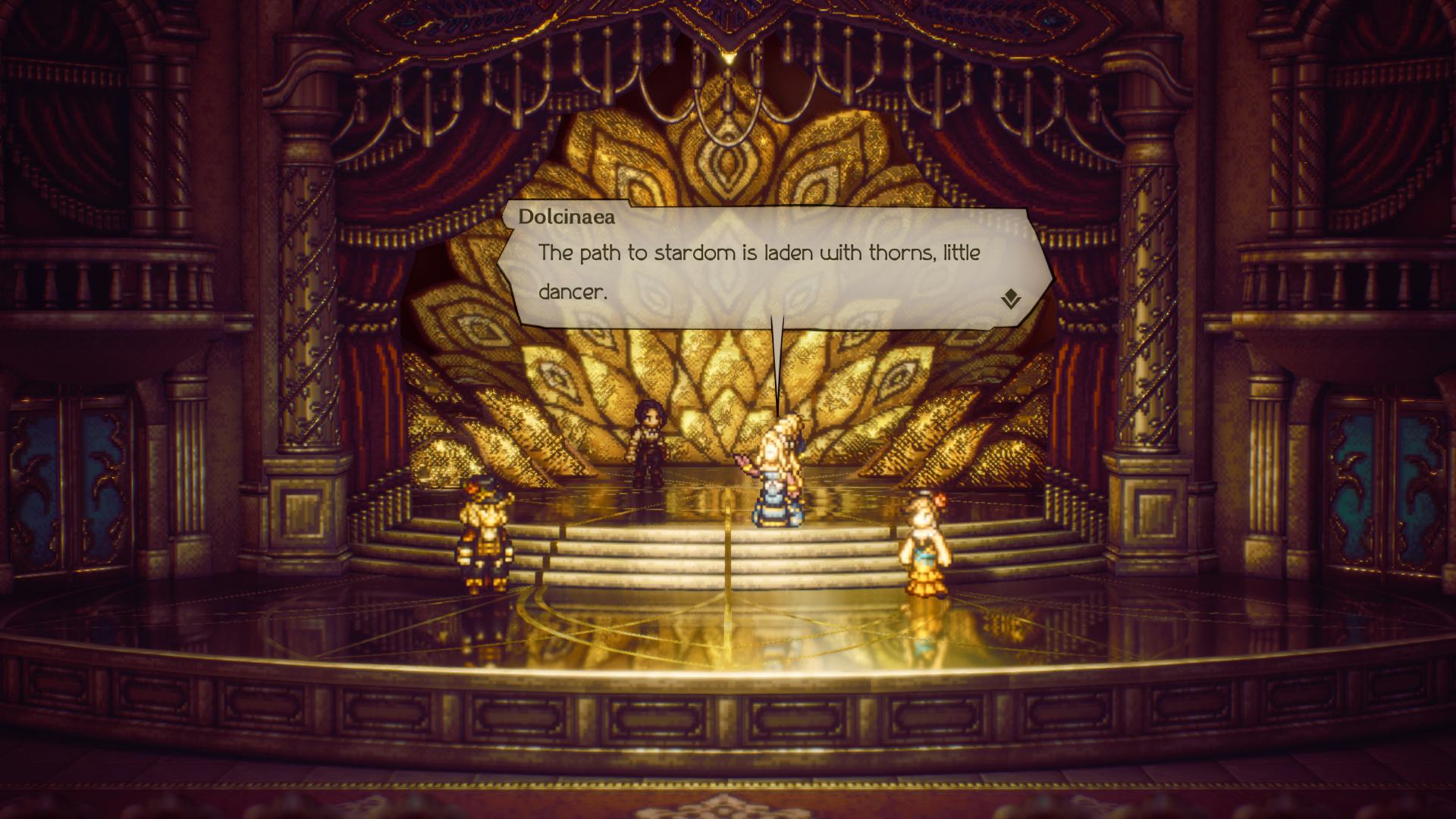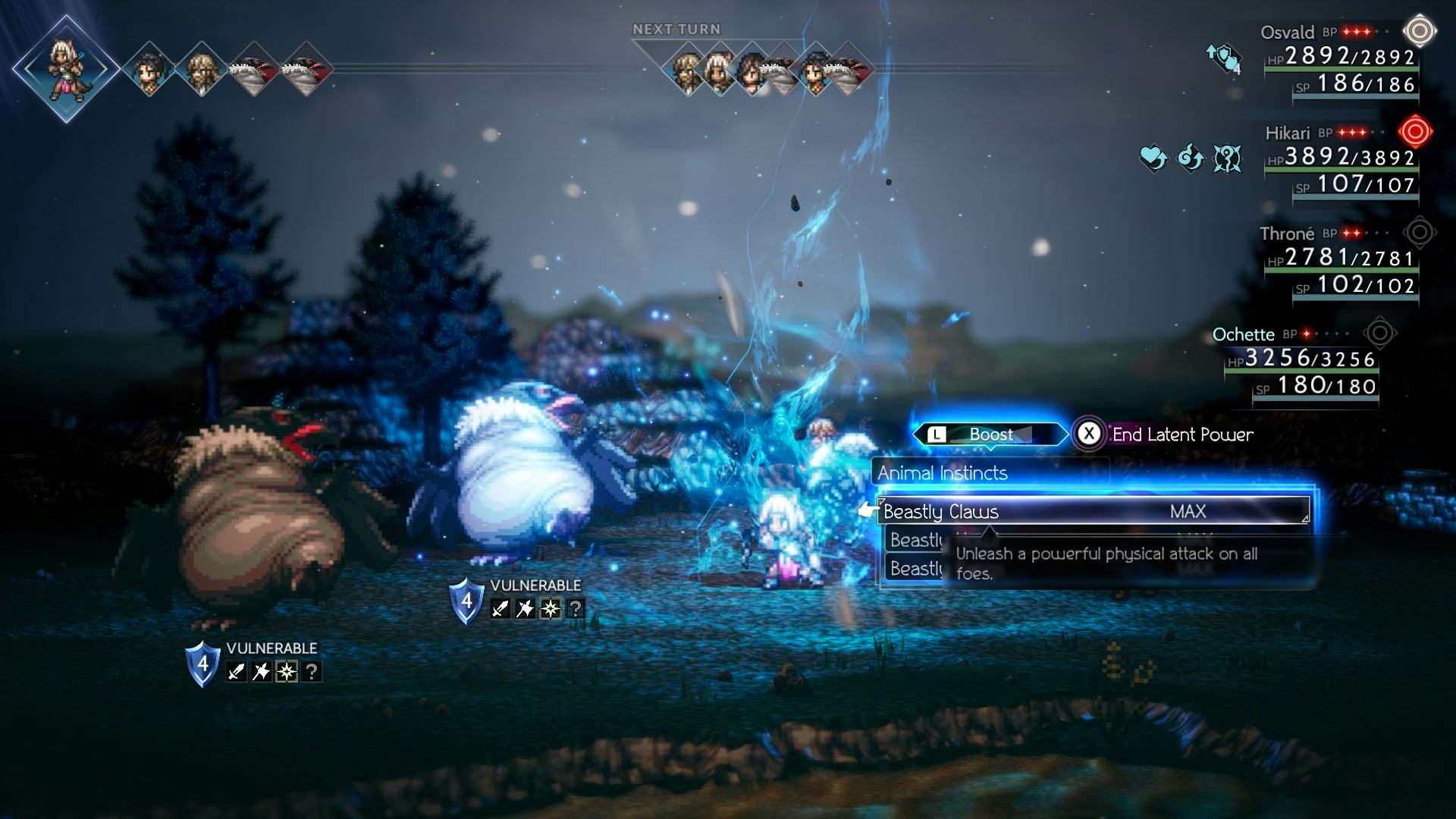
The last god standing between chaos and order confronts his enemy. I command him to attack and deal out 9999 damage, but he falls to his knees. In a climactic monologue, he defends the order of the world — then forgets his lines.
This epic scene is actually a puppet show, staged by a forgetful cleric who still hasn’t managed to learn his lines, something the children he performs for won’t stop pestering him about. This moment is one of eight beginnings that occur in Octopath Traveler II, the latest HD-2D RPG from Square Enix. The humorous opening made me laugh at its tongue-in-cheek ribbing of JRPG storytelling that even the first Octopath Traveler fell into, but ultimately it was a sign of what to expect in the sequel — something comfortable but sometimes too familiar.
While offering a handful of improvements that seek to satisfy criticism of its predecessor, Octopath Traveler II feels nearly identical to it mechanically, down to the archetypes of the eight new travelers. Improved writing and a beautiful retro-inspired world reinforce just how good a classic JRPG can be. Octopath Traveler II may not reinvent the wheel, but it’s forgivable when the wheel was already this damn good.

Type Casting
Octopath Traveler II takes the fundamental building blocks of the first game and transplants them into a new setting. The medieval fantasy setting of Orsterra has been replaced with Solistia, a world in the early days of industrialization that consists of two continents separated by a great ocean. Across Solistia, eight new stories unfold.
The gimmick of both Octopath Traveler and its sequel revolves around controlling eight party members through their individual stories all leading up to a momentous final chapter that ties it all together. You can play them in any order you choose.
Not every character has an interesting story, but some of them stand out as lively and original. The cleric Temenos especially surprised me with his carefree and non-devotional attitude towards religion that was genuinely endearing and is matched with an exciting murder mystery plot. Likewise, the dancer Agnea’s tale has little in the way of serious drama, but her doe-eyed journey to become a star can be a welcome breath of fresh air amongst the more one-note stories. Overall, the writing in Octopath Traveler II is smarter, sharper, and more willing to make characters messy.
Octopath Traveler II introduces Crossed Paths, which are shared stories between certain party members. This is likely a response to criticism that the original game felt too disjointed and lacked any sort of connection between party members. While Crossed Paths do improve this, they are essentially throw-away side stories that fail to build to something more meaningful. The second time around, the group still doesn’t feel like a group, and it’s a missed opportunity to build upon an otherwise strong foundation.

The weakest aspect of the new travelers is how similar they are to the first game. The original Octopath Traveler used JRPG archetypes as a basis for character stories. Octopath Traveler II uses the same classes, despite a wealth of options to choose from. Why couldn’t we have gotten a monk or dragoon in the mix this time around? It’s a head-scratching choice that undermines the sense of newness and novelty here.
Break it Down
This reliance on the same jobs limits the gameplay of Octopath Traveler II in other ways, too. Path Actions return, meaning every traveler has a unique skill they can use outside of combat. But each archetype repeats what came before. Hikari, the samurai who falls into the Warrior class, utilizes the same Challenge action as Olberic, the Warrior of Octopath Traveler.
Octopath Traveler II does add a new wrinkle to the Path Action system through the introduction of a day/night cycle to the game. All eight travelers have unique Path Actions for day and night, meaning you will need to play around with the time of day and the Path Actions at your disposal to find new and inventive ways to solve roadblocks to your progress. Yet the doubled Path Actions once again highlight Octopath Traveler II’s lack of originality. Hikari’s night Path Action is Bribe, which functionally operates like a hybrid of the previously seen Actions Inquire and Purchase.

The day/night cycle aims to make the game’s world feel a bit fuller, with different quests, NPC locations, and tougher enemies who come out under the moon. The latter feels like an attempt at fixing the excessive grindiness of the first game, but sadly, Octopath Traveler II is just as bad. Party members still don’t level if not actively in the party, meaning you’ll need to grind the same levels multiple times to get everyone up to speed.
Thankfully, combat feels as good as ever. The risky but rewarding Break system returns, where exploiting enemy weaknesses can be used to break through their shields. Each turn also adds a Boost Point to each party member that you can build up to unleash a progressively more powerful attack.
This is where Octopath Traveler II’s greatest improvements upon the original lie, with the introduction of Latent Powers. These are effectively Limit Breaks from Final Fantasy, giving each party member a unique skill to unleash. These Latent Powers help make combat more interesting, especially during tedious and drawn-out boss fights.
What’s Old is New

Octopath Traveler I and II run counter to the idea that they “don’t make them like they used to.” The series improves upon classic JRPGs with the stunning HD-2D engine and the Break and Boost combat system that feels like a natural evolution of the traditional ATB system from older Final Fantasy titles. Yet long stretches of grinding are also a holdover from the classic titles Octopath Traveler is emulating.
Despite my frustrations with the limited ways that Octopath Traveler II improves upon the original, at its core the game still scratches an itch that no other game can satisfy. I still spent more than 50 hours in the world of Solistia, exploring every part of the map I could and seeking out new stories to immerse myself in.
For those who lament the modern state of Final Fantasy, or want something that feels truly inventive in its design compared to many cookie-cutter AAA games, Octopath Traveler II is a journey well worth taking.
7/10
Octopath Traveler II will be released on February 24th for PlayStation 4, PlayStation 5, Nintendo Switch, and PC. Inverse reviewed the game on Nintendo Switch.
INVERSE VIDEO GAME REVIEW ETHOS: Every Inverse video game review answers two questions: Is this game worth your time? Are you getting what you pay for? We have no tolerance for endless fetch quests, clunky mechanics, or bugs that dilute the experience. We care deeply about a game’s design, world-building, character arcs, and storytelling come together. Inverse will never punch down, but we aren’t afraid to punch up. We love magic and science-fiction in equal measure, and as much as we love experiencing rich stories and worlds through games, we won’t ignore the real-world context in which those games are made.







